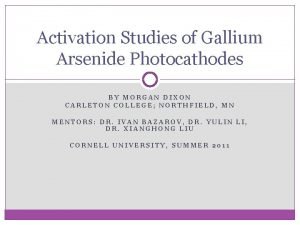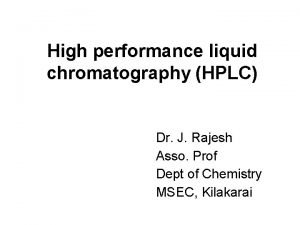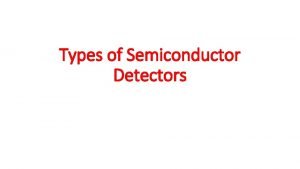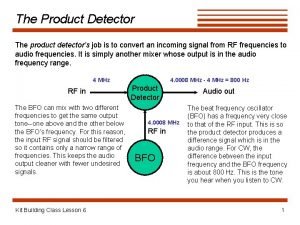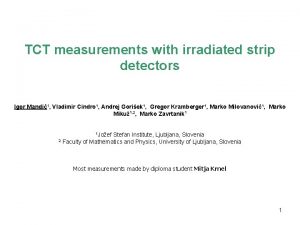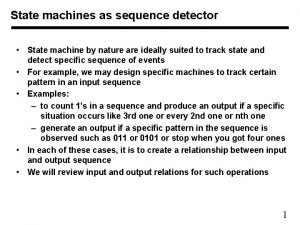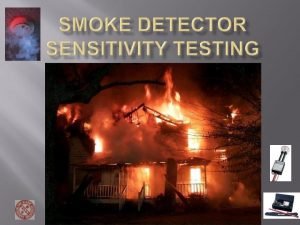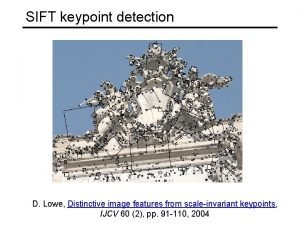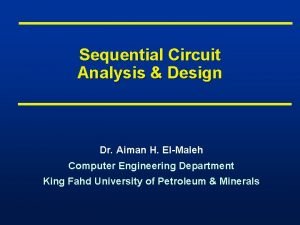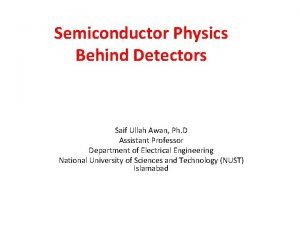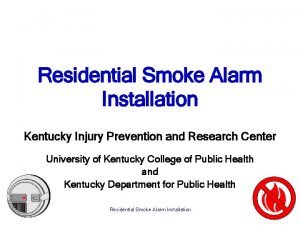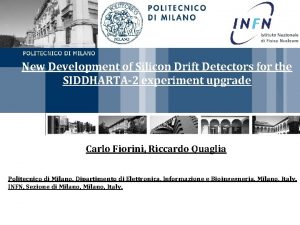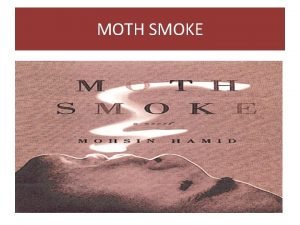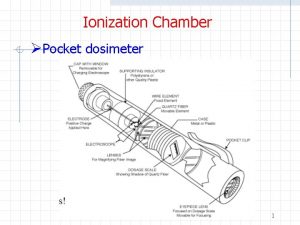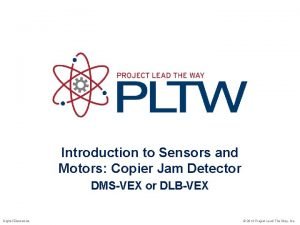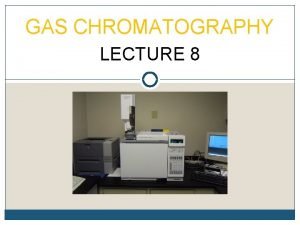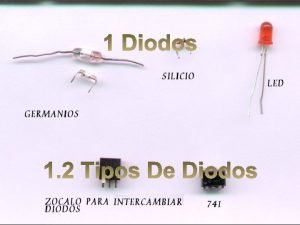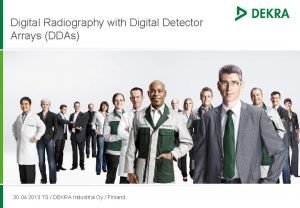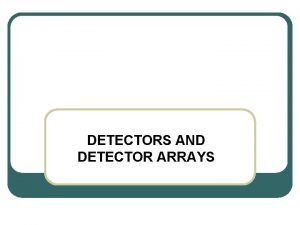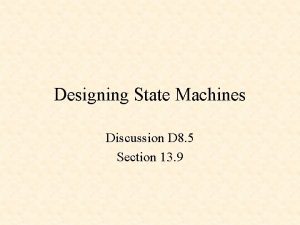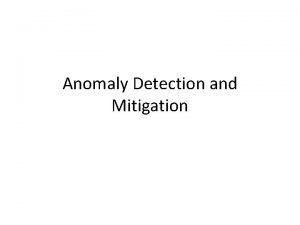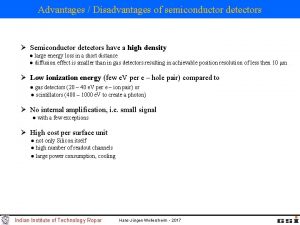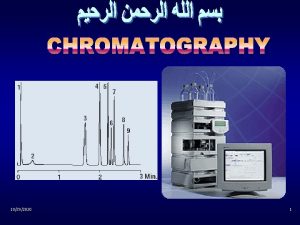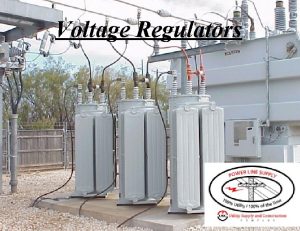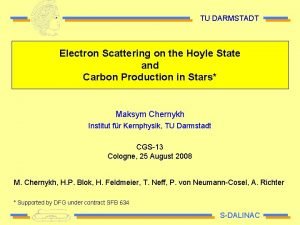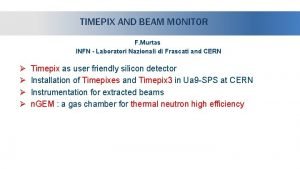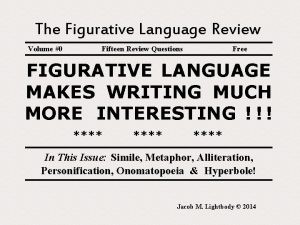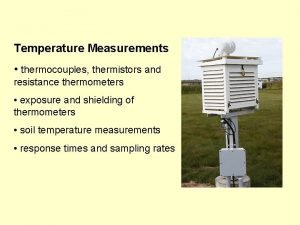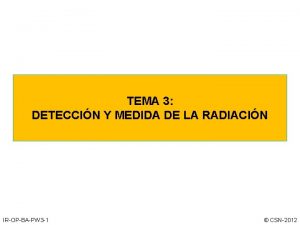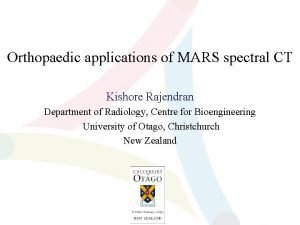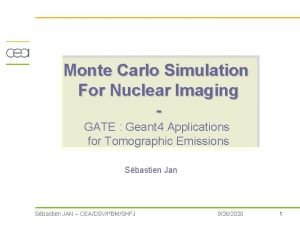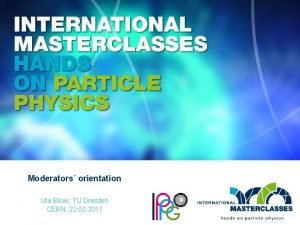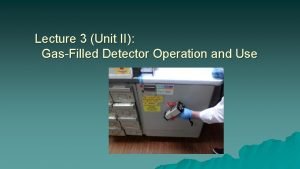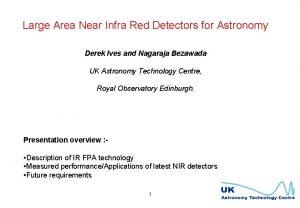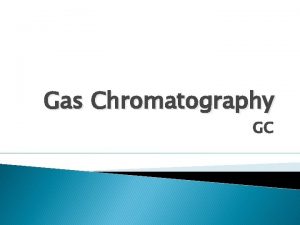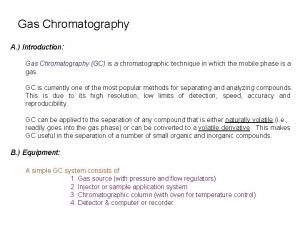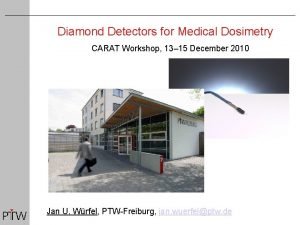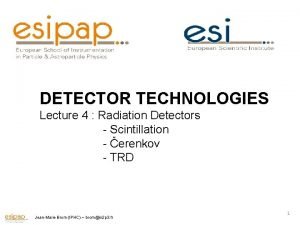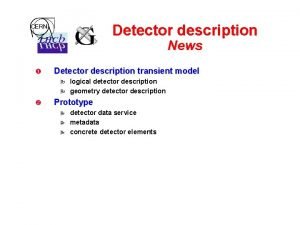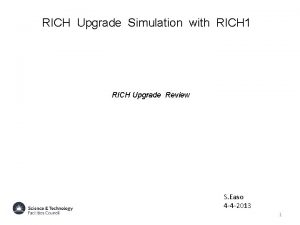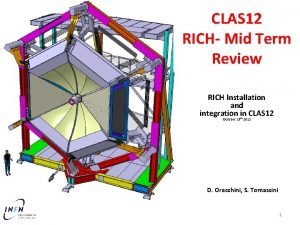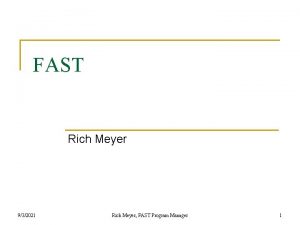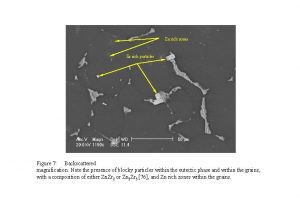Which RICH detector with a Cs I photocathode


























![Gas ∆VTHGEM(V) Gain (UV) QE Aeff[1] 170 nm This THGEM Optimal THGEM εextr εcoll Gas ∆VTHGEM(V) Gain (UV) QE Aeff[1] 170 nm This THGEM Optimal THGEM εextr εcoll](https://slidetodoc.com/presentation_image/06a5fd573cd79b075a7676a64bc8646a/image-27.jpg)






















- Slides: 49

Which RICH detector with a Cs. I photocathode is the best: MWPC or TGEM? (preliminary results obtained in collaboration between Breskin group and ALICE RICH group)

As was already reported during the Crete meeting two groups (COMPASS RICH and ALICE RICH) are currently considering to upgrade their RICH. One of the promising option is to use TGEMs instead of “classical” MWPC

ALICE experiment ITS TOF PMD HMPID TRD TPC MUON SPECTR. . PHOS FMD The HMPID detector has been designed to extend the useful range for the identification of p/K and K/p, on a track-by-track basis, up to 3 Ge. V/c and 5 Ge. V/c respectively.

The idea to build Cs. I RICH was first proposed at CERN by Charpak, ; Giomataris, Yu; Peskov, V (et al. ), see CERN proposal Development of a high-efficiency gaseous detector for the localization of photons from scintillators and Cherenkov radiators, 1991) The current ALICE/HMPID Detector β>1/n cosθ=1/(n β) Nph[cm-1 e. V-1]=370 Z 2(1 -1/n 2) Concept: proximity focussing Cs. I RICH • 7 modules: total area 11 m 2 largest application so far • 42 PCs (64 cm x 40 cm) in total (6 per module) • liquid C 6 F 14 radiator • MWPC • cathode pads coated with Cs. I • 3840 pads (8 x 8 mm²) per PC with individual analogue readout

R&D activity for upgrade ALICE RICH In the framework of the ALICE experiment at LHC, it has been proposed to build a Very High Momen tum Particle Identification Detector (VHMPID) with the aim to upgrade the current ALICE layout The VHMPID should be able to identify, on a track-by- track basis, protons up to 26 Ge. V/c enabling to study the leading particles composition in jets (correlated with the π0 and /or γ energies deposited in the electromagnetic calorimeter).

Due to the money constrains… a much more modes option is now considering Due to the very limited space available in the ALICE detector, the VHMPID will be composed by several small (~1 x 1 x 1 m 3) modules The photodetector should have a planar geometry

Two options are under consideration by ALICE RICH group: MWPC ? TGEMs/RETGEMs ?

The main advantages of MWPC-a proven technology Disadvantages: still complicated: Wires (some may fail) State of art front-end electronics Cathode excitation effect (seen by the COMPASS team )

There at least three main advantages of the TGEM for RICH detectors: ●Very high gains (>105)can achieved with TGEMs in some gases, especially in mixtures of Ne with a small concentration of quenchers ● TGEM can operate in badly quenched gases as well as in gases in which are strong UV emitters. This may open a possibility of using windowless detectors for some RICH designs ● If necessary TGEMs can operate in “handron blind mode” with zero and even reversed electric field in the drift region which allows strongly suppress the ionization signal from charged particles

The goal of this work is to compare MWPC and TGEM

What can be/should be compared? 1)QE 2)Maximum gain before the feedback appears 3)Operation UV+ charged particles 4)Stability 5)Discharges(gain limit) …and probably much more

Some answers we already know, however what is still not well known for TGEM: 1)QE 2) Operation under the condition UV+ charge particles

The QE was measures only once for RETGEM operating in Ne (and it was ~50% of TMAE) …Ne is good but may be unstable due to uncontrolled impurities

Counting plateau TMAE detector Double RETGEM

In this work we advocate that one of the best approach for RICH will be to use triple TGEM (or RETGEM) operating in Ne mixtures

The main motivation was to achieve high gains under the conditions UV+X-rays or UV+MIPs In another gases there could be a huge difference in the maximum achievable gains with UV and MIPs

Indeed: 55 Fe X-ray gun THGEM detectors have shown high gas gains for single photoelectron detection, However, in the presence of a relatively intense radioactive bacgdround ( charged particles, Xrays) , due to the Raether limit the maximum achievable gain can be lower, on a fctor of 100

Raether limit: the maximum achievable gains of hole –type structures Amax are governed by the so-called Raether limit: Amaxn 0=Qmax=106 -107 electrons, where n 0 is the number of primary electrons created in the drift region of the detector (Qmax depends on the detector geometry and the gas composition)

In Ne density of the primary ionization is low, so the efficient n o (its density) is less and this allows higher gains to achieve: Ne Mean free pas of Fe photoelectrons is about 1 mm

Comparison of maximum achievable gains in Ar+5%CH 4 and in Ne 1) Operational voltage is lower 2) Gain in presence of X-ray and MIP is larger

So why Ne-based mixtures? …the main reason being much larger gains achieved in the presence of radioactive background. In addition the comparatively low operation voltages resulting in reduced discharge probability, discharge energy and charging-up effects

To prove that Ne-based mixtures can be beneficial for RICH detectors one have to demonstrate, as a first step, that in these mixtures high photoelectron extraction from the Cs. I photocathode and detection efficiencies with the THGEM are reached QE in vacuum Effective area Backscattering in gas Collection in the holes

Extraction measurements Collection measurements

Electric filed on the top TGEM electrode

Collection efficiency measurements (the principle)

Results: At high enough gains 100% collection efficiency was measured
![Gas VTHGEMV Gain UV QE Aeff1 170 nm This THGEM Optimal THGEM εextr εcoll Gas ∆VTHGEM(V) Gain (UV) QE Aeff[1] 170 nm This THGEM Optimal THGEM εextr εcoll](https://slidetodoc.com/presentation_image/06a5fd573cd79b075a7676a64bc8646a/image-27.jpg)
Gas ∆VTHGEM(V) Gain (UV) QE Aeff[1] 170 nm This THGEM Optimal THGEM εextr εcoll εeffph 2 This THGEM Optimal THGEM Ne/CH 4(95/5) 800 5. 4 E 4 0. 3 0. 54 0. 91 0. 73[2] 1 0. 12 0. 20 Ne/CH 4(90/10) 900 1. 3 E 5 0. 3 0. 54 0. 91 0. 79[3] 1 0. 13 0. 22 Ne/CF 4(95/5) 750 6. 0 E 5 0. 3 0. 54 0. 91 0. 763 1 0. 12 0. 21 Ne/CF 4(90/10) 850 1. 2 E 6 0. 3 0. 54 0. 91 0. 834 1 0. 14 0. 23 Optimal THGEM: t = 0. 4 mm , d = 0. 3 mm, a = 1 mm; h = 0. 01 mm, Value for 1. 5 k. V/cm photocathode electric field [3] Values for 2 k. V/cm photocathode electric field [1] [2] fpth~0. 65 in COMPASS, εeffph~0. 2

fpth= exp(-Ath/A 0) The threshold contribution will be less at high gains

Gain studies and preliminary stability evaluation in Ne-based mixtures

Experimental setup

Cs. I coated MWPC Cs. I coated triple TGEM

No sparks in presence of Ru Excellent short-term stability

Gain of TGEMs UV photons 55 Fe

Operation at the condition: normal drift, UV+Ru Conclusion: the overall gain should be below 105 with normal drift (close to Raether limit? ). With the reverse drift 5 -10 times higher

Comparison: normal drift vs. reversed Normal Ru Ru Fe The errors are large, but the trends is clear Fe Reversed

General limit of gaseous detectors: See: P. Fonte et al, NIM A 419, 1998, 405; Yu. Ivaniouchenkov et al, NIM A 422, 1999, 300; P. Fonte et al. , Nuclear Science, IEEE Transactions 46, Issue 3, Part 1, June 1999 Page(s): 321 - 325 P. Fonte et al ICFA Insrum Bull. , Summer 1998 issue, SLAC-JOURNAL, ICFA-16

Where is TGEM in this picture? Triple TGEM is inside this general limit!. . So at the beam test we should not expect an unlimited gain

Stability measurements (preliminary):

Windowless TGEM? Measurements with the UV only

So TGEM looks very promising in the Lab. but extensive beam tests are necessary to prove it in realistic conditions

A gas chamber for the beam test In this set up the signals can be readout ether by Ortec or by HMPID electronics from pads

Readout electronics is added (to the pads) HMPID Gassiplex

Oscilloscope output 55 Fe

Output signal UV signals

Beam test uncoated TGEMs - One, two or three stages TGEM detector were already tested at the beam, in Ne/CH 4 (98/2) - With triple TGEM and a gain close to 105 there was no a single spark during one week of operation at maximum beam intensity - No problems with the stability was observed in these conditions 400 ms PS beam spill

Conclusions ●In this work we advocate that one of the best approach will be to use triple TGEM/RETGEM operating in Ne-based mixtures ● In the Lab environment TGEM look very promising; high gain, sufficiently high practical QE (close to COMPASS) ● But in real situation superiority of the TGEM/RETGEM still should be proven ● Another effects may be essential for the final decision (like cathode excitation effect) ● Beam tests of Cs. I coated TGEMs/RETGEMs are in preparation

Spare


Operation of MWPC in freon and its mixtures
 Gaas photocathode
Gaas photocathode Detectors used in hplc
Detectors used in hplc Application of hplc
Application of hplc Detector building science olympiad cheat sheet
Detector building science olympiad cheat sheet Diffused junction detector
Diffused junction detector Product detector circuit
Product detector circuit Spaghetti detector
Spaghetti detector Sequence detector examples
Sequence detector examples Walter jaeger smoke detector
Walter jaeger smoke detector Sift keypoint detector
Sift keypoint detector Sequence detector 1101
Sequence detector 1101 Disadvantages of semiconductor detector
Disadvantages of semiconductor detector Cci controls lp gas detector
Cci controls lp gas detector Smoke detector installation kentucky
Smoke detector installation kentucky Alissa persike
Alissa persike Silicon drift detector explained
Silicon drift detector explained Moth smoke detector
Moth smoke detector Pocket ionization chamber
Pocket ionization chamber Dlb dms
Dlb dms Kjustk
Kjustk Gas chromatography principle
Gas chromatography principle Moravec detector
Moravec detector Detector de diodos
Detector de diodos Digital detector array
Digital detector array Xenon gas detector ct
Xenon gas detector ct 1101 sequence detector using mealy
1101 sequence detector using mealy What is the example of cohesive devices
What is the example of cohesive devices Argus smoke detector
Argus smoke detector Cisco anomaly detector
Cisco anomaly detector Advantages and disadvantages of semiconductor detector
Advantages and disadvantages of semiconductor detector Hplc detector types
Hplc detector types Regulator neutral detector
Regulator neutral detector Colour code detector
Colour code detector Timepix detector
Timepix detector Silicon drift detector principle
Silicon drift detector principle Figurative language
Figurative language Colour code detector
Colour code detector Thermal conductivity detector
Thermal conductivity detector Detector de ionización gaseosa
Detector de ionización gaseosa Reverse
Reverse Ct scan detector
Ct scan detector Ct scan detector
Ct scan detector Uni dresden
Uni dresden Cutie pie ionization chamber
Cutie pie ionization chamber Ir detector
Ir detector F(3)
F(3) Flame ionization detector
Flame ionization detector Ptw diamond detector
Ptw diamond detector Scintillation detector technologies
Scintillation detector technologies Logical fallacies detector
Logical fallacies detector
